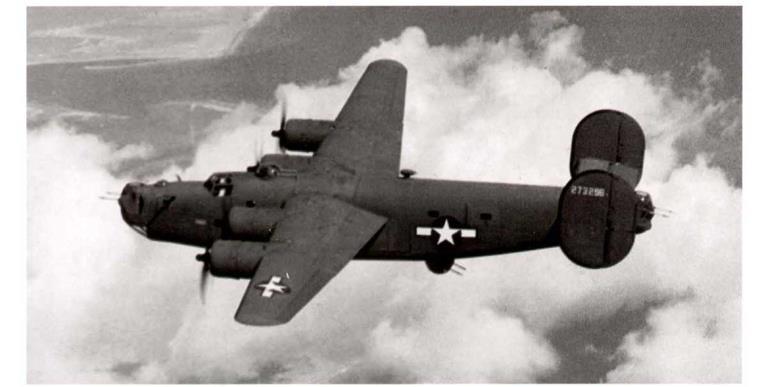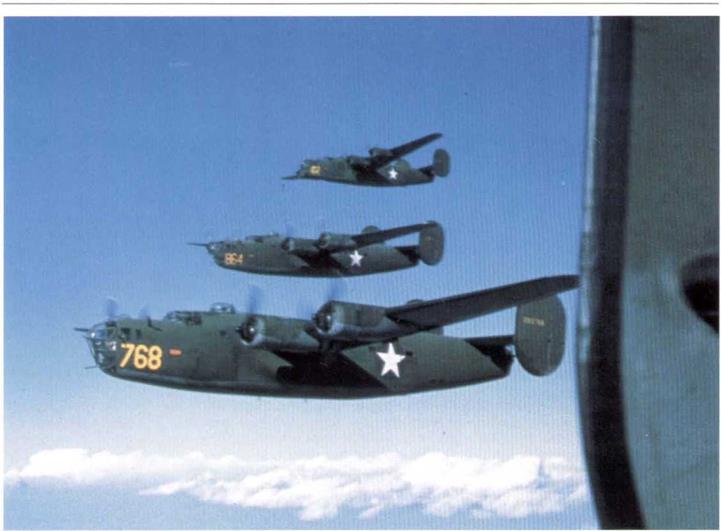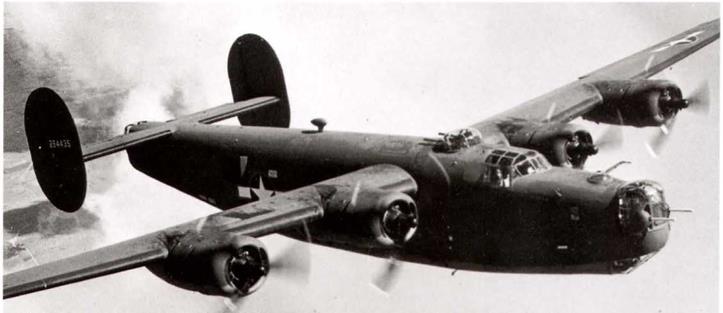Deletion of camouflage from combat aircraft discussed between Chief of Air Staff and the Chief of the Eng. Div, (WF), October 1, 1943 and October 6, 1943
In a teletype dated October 1, 1943, to the Eng. Div. (WF), the AC/AS, MM&D (Wash.), sought information relative to the possibility of deleting camouflage from combat aircraft. In a reply dated October 6, 1943, the Chief of the Eng. Div. (WF), stated that the small increase in speed, of 1 to 2 percent at top speed and a decrease in weight of 15 to 20 pounds on heavy bombers, was considered to be outweighed by the resultant reduction in protection against corrosion. Wax coatings offered inadequate protection. Thus, WF recommended that camouflage not be removed from combat aircraft if corrosion resistance was to be maintained in a salt atmosphere. (We now know that a decision re removal of camouflage was being made at the top level in Washington, DC, and that WF’s opinion did not prevail – author).
|
Boeing B-17F-27-BO, 41-24639, (the last B-17 with a 41- serial number) aircraft OR-W, of the 323rd BS, 91st BG. It has the medium green blotches only on the rudder and has all of the letters and numbers, tail triangle, and the national insignia grayed over. The insignia has the blue outline. This was in the late 1943 period when the Eighth Air Force was suffering very heavy losses in its mission over Germany. This aircraft named “The Careful Virgin”, shows almost fifty missions performed. (USAF) |
 CHAPTER 3:1943—The Struggle for Air Superiority
CHAPTER 3:1943—The Struggle for Air Superiority
|
|
Consolidated B-24D, 42-52744(7), and two others of a training school, in loose formation. Aircraft are numbered in yellow on the nose, 768,864, and 812(?). (USAF)
Consolidated B-24J-30-CO, 42-73296, on a test flight over San Diego, shows the blue outline insignia on the standard dark olive drab and neutral gray finish. (Convair)
|
|
Consolidated B-24H-I-CF, 42-64435, is one of the 738 of this block built at the Convair Forth Worth factory. (Convair)













